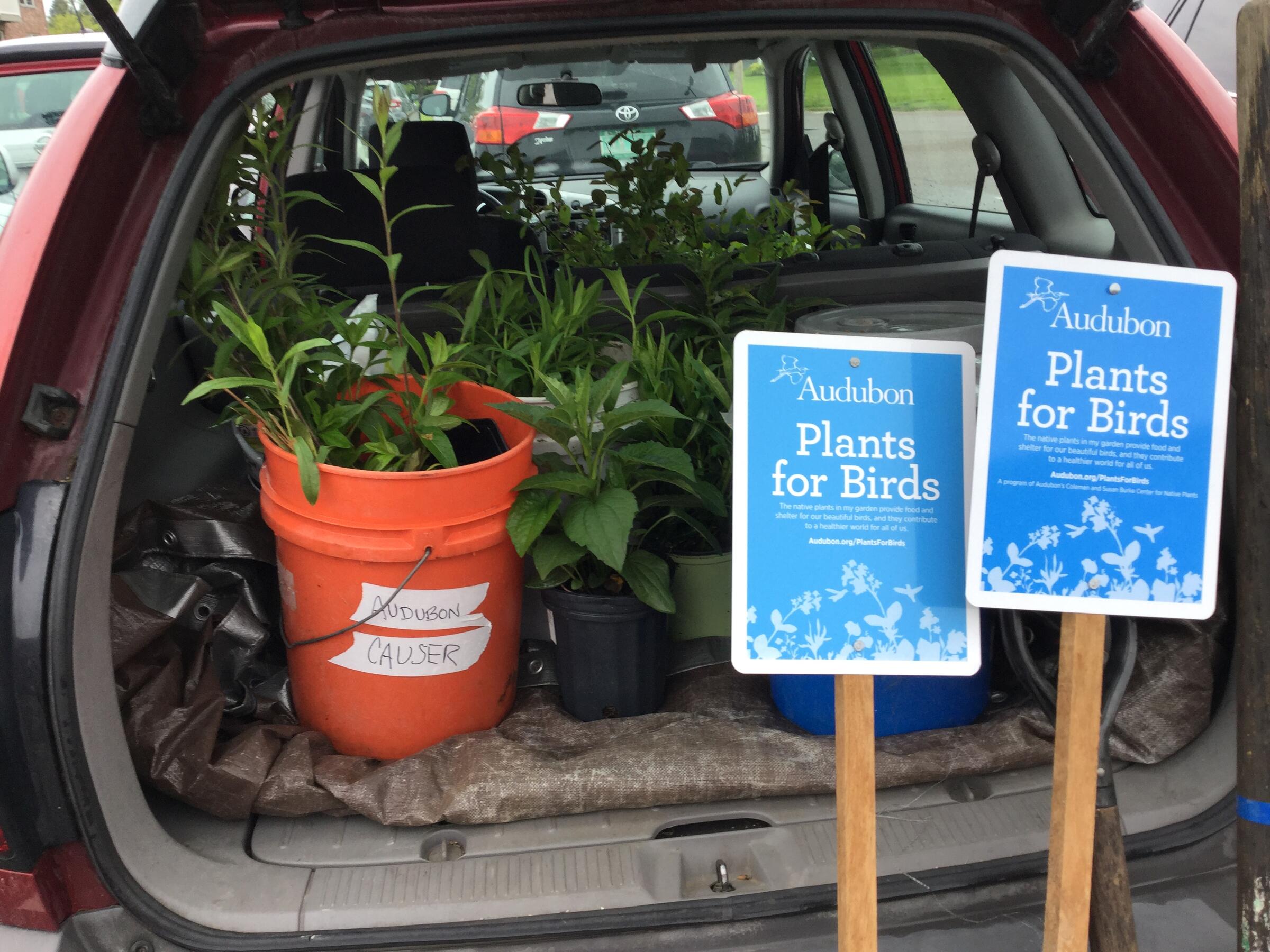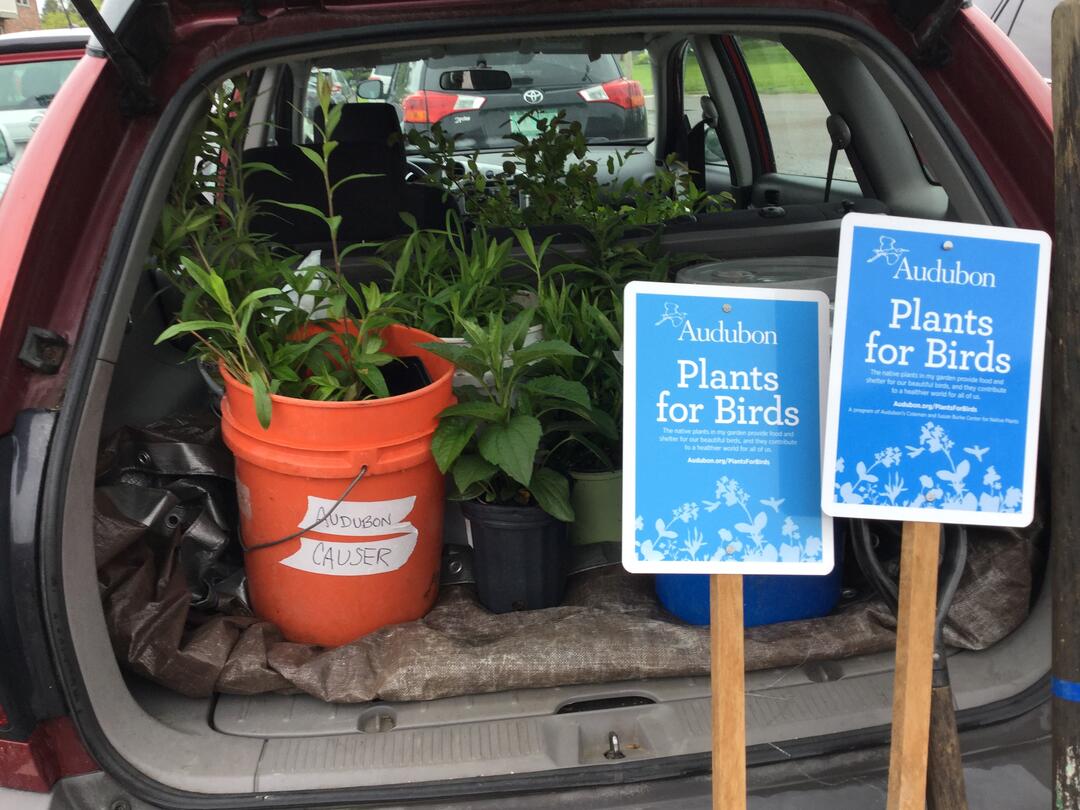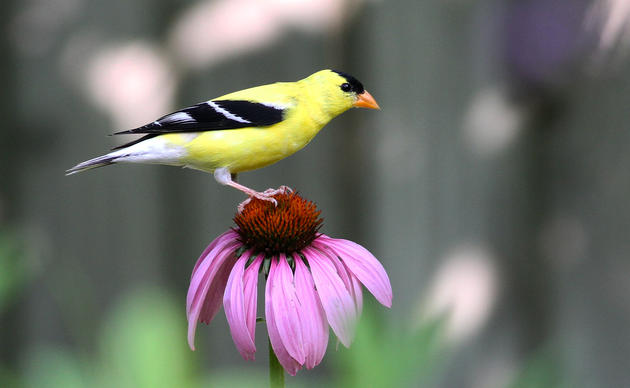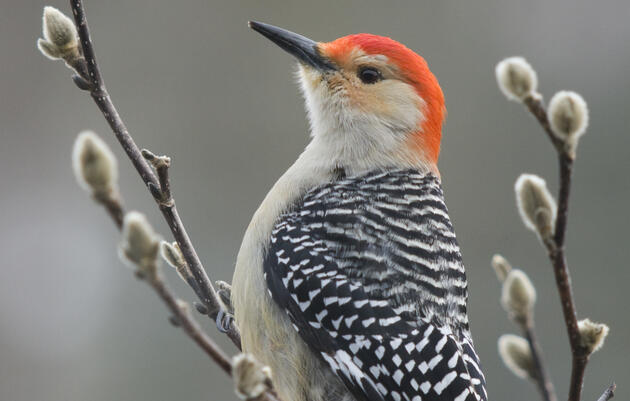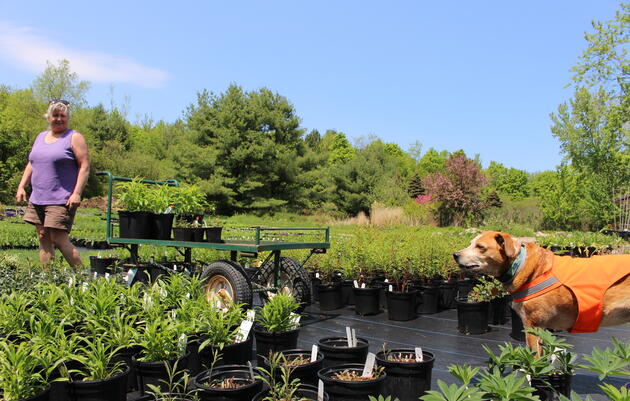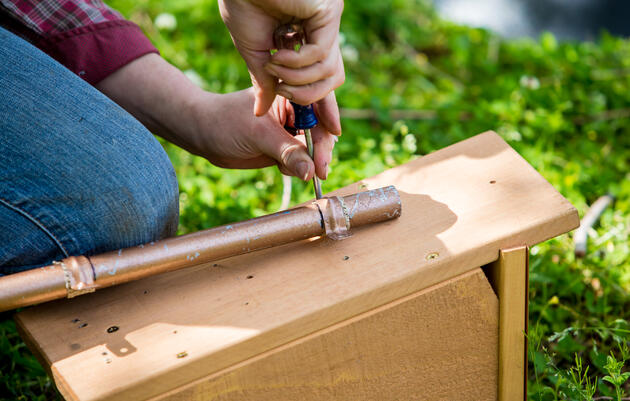When creating and managing habitat for birds and pollinators, here are some important factors to consider:
- Bloom times: Plant for all of Vermont’s blooming seasons. To ensure that pollinators and birds can stay in the area and reproduce, they will need food to support them throughout the entire growing season. Pay special attention to species that flower early, such as willows and maples, as well as late-flowering species like asters and goldenrods.
- Complexity: The greater the complexity of structure the better. Think about the layers of the forest for inspiration. Some tall trees mixed in with medium height trees and shrubs and interspersed with open areas of native grasses and forbs such as goldenrod and asters are ideal.
- Diversity: Diversity is the key to survival. Many of the pollinators that are most threatened have evolved specifically to feed on one type of plant or a small group of plants. The greater number of plant species provided, the more diverse the pollinator population will be. Many birds depend upon caterpillars to feed to their young nestlings. Native plant species are host to a tremendous number and diversity of caterpillar species as compared to their non-native counterparts. Consult our Superstar Native Plants for Vermont webpage for some excellent options. Explore Audubon's Native Plant Databse for more options.
- Soften the edges: Transitions between open land and areas with native plants are important. Birds and bees thrive in the complex layers and messy edges of habitat. Resist the urge to “clean things up” and retain a layer of native shrubs and/or trees when haying or planting crops near forested habitat.
- Keep it Local: Look to your local neighboring habitats for inspiration. Determine what types of trees and plants are established and doing well, and can serve as sources for seeds or additional plantings. These habitats will also indicate which pollinator and bird species are likely to be using an area.
- Size: The larger the area, the better. For farms, set aside at least a 30-foot- wide area when planting field edges, ditches, hedgerows, or riparian areas.
- Invasive Species Removal: Invasive plant removal will let native plants thrive. Where possible, remove invasive plants, such as wild parsnip, reed canary grass, honeysuckle, buckthorn, and multiflora rose. Learn more about Vermont's invasive plant species and how to manage them.
- Planned uses: How will this land be used over time? In the landscape, consider where humans will be most active. Trees get bigger than we expect; allow for plenty of room for growth. On farms, consider whether or not the area will be grazed or managed periodically (i.e., ditched, brush-hogged, etc.). This will help guide decisions about which plants should be established and are likely to thrive in the long term.
Related
Superstar Native Plants for Vermont
Some native plants are more powerful than others when it comes to supporting pollinators and birds.
Finding Native Plants in Vermont
A list a local sources to purchase native Plants for Birds in Vermont.
Shelter for the Birds and the Bees
There are plenty of natural and artificial features that wildlife can utilize.
How you can help, right now
Donate to Audubon
Help secure a future for birds at risk from climate change, habitat loss and other threats. Your support will power our science, education, advocacy and on-the-ground conservation efforts.
Visit Audubon
It's always a good time to visit the Audubon Center. Trails are open to the public year-round. Visit us daily from dawn until dusk! Donations are appreciated.
Events
Adults, preschoolers, foresters, photographers, sugarmakers and families will all find opportunities to connect with nature.

